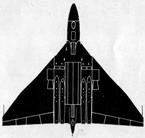Blast33
Posts: 404
Joined: 12/31/2018
From: Above and beyond
Status: offline

|
<type>Update</type>
<summary>Add the AN/ALQ-231 Intrepid Tiger II Comms jamming pod to US Marine Corps Harvest Hawk KC-130J, F/A-18C/D, AV-8B, UH-1Y, AH-1Z, CH-53K, RQ-21 and MV-22</summary>
<detail>
The Harvest Hawk+ kit will add electronic warfare capabilities in the form of the AN/ALQ-231(V)1 Intrepid Tiger II pod. The (V)1 version of the system is focused primarily on scrambling enemy communications and can do so selectively, but it also has the ability to listen in on those transmissions.
This same equipment can jam the frequencies associated with many types of common remotely- trigged improvised explosive devices and can do so semi-autonomously using pre-programmed parameters. The system is also configured in a way that is designed to readily accept new and improved capabilities over time.
The Marines have already fielded a (V)3 version on UH-1Y helicopters that can attack a broader range of radio bands and has improved direction-finding capabilities. There are plans to add in radar jamming functionality in a future Intrepid Tiger II “Block X” upgrade.
The Intrepid Tiger II pod works by actively monitoring for enemy communications at certain bandwidths and then selectively jams frequencies that are being used by the bad guys once they start talking. This capability allows for a secondary communications intelligence ability, so the pod can be used to actually eavesdrop on the enemy's chatter as well as disrupting it. The pod can also actively jam known bandwidths that are commonly used to initiate IEDs, such as those used by cellular phones or garage door openers.
What makes this pod even more tactically potent is that it can either be used in automated modes set by the pilot in the aircraft that is carrying it or its information can be data-linked to a ground station for exploitation in real time. This means that the pod can be remotely controlled and the intelligence it gathers can be listened to and analyzed by experts who are fluent in local dialects. They can also gauge the effect of Intrepid Tiger's pinpoint jamming and change disruption methods to get the best effects in real time. Needless to say, having a ground station with experts in jamming and linguistics providing "virtual over-watch" for a bunch of Marines moving through a high-threat area on the ground is a godsend for commanders.
When the Marine Corps Intrepid Tiger II (V)3 program was ramping up, it required a mission configurable, software-defined radio reaching frequencies of up to 6 GHz. It needed to be small, lightweight and not use much power because it would be part of a family of networked EW systems.
“It’s often difficult for RF components to detect weak signals in congested environments, because the signals of interest are hidden by larger, interfering signals,” said Kerry Rye, General Manager of the Signal Solutions business. “But these environments are where the PicoFlexor Transceiver thrives by finding the mission critical signals where other radios fail,” he said.The PFT-1’s high sensitivity and dynamic range coupled with a fast tuning speed are the discriminating features that make this signal detection possible.
As a software defined radio, the PFT-1 can be used for application development and field deployment for a variety of mission requirements. Its open architecture design not only makes a system easily configurable for each operation, but also prolongs a system’s viability.
This was the first system deployed in support of the MAGTF EW 2020 vision. In November 2013, an upgraded version of Intrepid Tiger II system, Block 1, was deployed with Marine Expeditionary Units (MEU) with AV-8Bs and in 2014 on land with USMC F/A-18s supporting multiple combatant commands. With the addition of the Intrepid Tiger II pod,
Although the AN/ALQ-231 is currently configured for communications jamming, moves are afoot to expand the systems’ mission
to include radar jamming under the AN/ALQ-231 Intrepid Tiger-II Block-X programme which commenced in 2016,and for which funding was secured in the 2017 US defence budget. This variant is also planned for the CH-53K
Please note the difference in platforms and timings between (V)1, (V)3, (V4) and block X in the embedded picture. The one on the RQ-21 will be a scaled down variant of course.
</detail>
<evidence>
https://www.dacis.com/budget/budget_pdf/FY20/RDTE/N/0604270N_113.pdf
https://www.thedrive.com/the-war-zone/21805/marine-kc-130js-are-getting-a-much-more-potent-bolt-on-weapons-and-sensor-kit
https://foxtrotalpha.jalopnik.com/how-the-marines-cheaply-and-quickly-built-precision-com-1577979656
https://www.leonardodrs.com/sitrep/q2-2016-ensuring-airborne-intelligence-and-awareness/a-small-but-vital-component-for-jamming-communications/
https://www.globalsecurity.org/military/systems/aircraft/systems/an-alq-231.htm
https://armadainternational.com/wp-content/uploads/2017/06/ARM_COM_1706_07_EWAirborne.pdf
https://twitter.com/alexgarcialonso/status/1358488683696041984
</evidence>[/quote]

 Attachment (1) Attachment (1)
< Message edited by Blast33 -- 2/19/2021 9:58:07 AM >
|
 Printable Version
Printable Version













 . So the goal of this post is to not catch other people off balance. All those Iranian small boats are complicated enough
. So the goal of this post is to not catch other people off balance. All those Iranian small boats are complicated enough 









 New Messages
New Messages No New Messages
No New Messages Hot Topic w/ New Messages
Hot Topic w/ New Messages Hot Topic w/o New Messages
Hot Topic w/o New Messages Locked w/ New Messages
Locked w/ New Messages Locked w/o New Messages
Locked w/o New Messages Post New Thread
Post New Thread